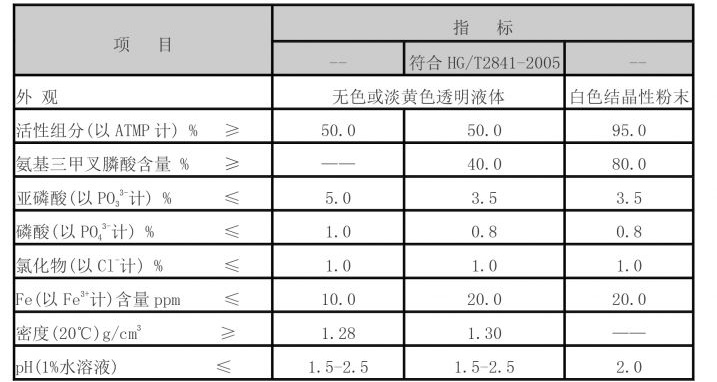corrosion & scale inhibitors
Corrosion and Scale Inhibitors Essential Agents for Material Protection
Corrosion and scale formation are two of the most significant challenges facing various industries, including oil and gas, water treatment, and manufacturing. These phenomena can lead to substantial financial losses, reduced efficiency, and increased maintenance costs. To combat these issues, the use of corrosion and scale inhibitors has become essential. This article explores the importance of these inhibitors, their mechanisms of action, and their applications in various industries.
Understanding Corrosion and Scale Formation
Corrosion is the gradual destruction of materials, usually metals, through chemical reactions with their environment. It can manifest in various forms, such as uniform attack, pitting, galvanic corrosion, and crevice corrosion. Environmental factors like moisture, oxygen, salts, and acids often accelerate this process. On the other hand, scale formation usually refers to the buildup of minerals, such as calcium carbonate or sulfate scales, on surfaces in contact with water. This can occur in boilers, heat exchangers, and pipelines, leading to insulating layers that hinder heat transfer and increase energy consumption.
The Role of Corrosion and Scale Inhibitors
Corrosion and scale inhibitors are chemical agents designed to reduce or prevent these damaging processes. They achieve this through various mechanisms. Corrosion inhibitors may work by forming a protective film on metal surfaces, altering the electrolytic activity of the environment, or acting as sacrificial anodes. Scale inhibitors typically interfere with the crystallization process of the minerals, preventing their deposition or promoting their dispersion in the water.
Types of Corrosion Inhibitors
1. Anodic Inhibitors These inhibitors work by reducing the anodic reaction of the corrosion process, effectively minimizing metal dissolution. Common anodic inhibitors include chromate and nitrite compounds, though their environmental impact has led to stricter regulations.
2. Cathodic Inhibitors These agents slow down the cathodic reaction, thereby reducing the overall corrosion rate. Examples include zinc salts and phosphates.
3. Mixed Inhibitors As the name suggests, these inhibitors simultaneously reduce anodic and cathodic reactions, making them versatile options for various applications.
Types of Scale Inhibitors
corrosion & scale inhibitors

1. Threshold Inhibitors These are added in very small concentrations and can prevent scaling even at high supersaturation levels. They function by disrupting the crystallization process.
2. Polymeric Inhibitors These long-chain molecules provide a physical barrier against scale formation, effectively interfering with the deposition of scales such as calcium carbonate.
3. Sequestering Agents These compounds bind with calcium, magnesium, and other ions in the water, minimizing their availability for scale formation.
Applications in Various Industries
The application of corrosion and scale inhibitors is widespread across numerous sectors
- Oil and Gas In the oil and gas industry, pipelines and drilling equipment are susceptible to both corrosion and scale. Inhibitors help maintain the integrity and efficiency of these systems, ensuring smoother operations.
- Water Treatment Water treatment plants utilize corrosion and scale inhibitors to protect piping systems and machinery from damage while ensuring the effective delivery of potable water.
- Manufacturing In manufacturing processes, especially those involving metal components, inhibitors help extend the life of equipment and reduce downtime caused by repair and replacement.
- Power Generation Power plants rely on boilers and cooling systems that are prone to scale buildup and corrosion. Inhibitors play a crucial role in maintaining efficiency and preventing failures.
Conclusion
Corrosion and scale formation pose significant threats to infrastructure and equipment across various industries. The strategic use of corrosion and scale inhibitors is critical in safeguarding materials from these damaging processes. By understanding the mechanisms and applications of these inhibitors, industries can implement effective strategies to enhance longevity, reduce maintenance costs, and improve overall operational efficiency. As technology advances, the development of more environmentally friendly and effective inhibitors will likely remain a priority, ensuring sustainable industrial practices for the future.
-
2-Phosphonobutane-1,2,4-Tricarboxylic Acid: Scale & CorrosionNewsAug.29,2025
-
Premium Isothiazolinones | Broad-Spectrum Biocidal SolutionsNewsAug.28,2025
-
LK-319 Special Scale And Corrosion Inhibitor For Steel Plants: Advanced Solutions for Industrial Water SystemsNewsAug.22,2025
-
Flocculant Water Treatment: Essential Chemical Solutions for Purification ProcessesNewsAug.22,2025
-
Isothiazolinones: Versatile Microbial Control Agents for Industrial and Consumer ApplicationsNewsAug.22,2025
-
Scale Inhibitor: Key Solutions for Water System Scale PreventionNewsAug.22,2025





